Biophilic Design: Bringing Nature Indoors
Chosen theme: Biophilic Design: Bringing Nature Indoors. Step into a home page that celebrates living closer to nature—with uplifting ideas, heartfelt stories, and practical moves you can apply today. Subscribe and share your own nature-forward spaces.

Health and Happiness, Backed by Research
Studies linking nature exposure to reduced stress and improved cognition keep multiplying. From attention restoration theory to the WELL Building Standard, the evidence is clear: natural light, greenery, and organic materials measurably support mood, focus, and overall wellbeing.
A Short Story: The Windowless Office That Breathed Again
We added a light shelf, a living wall of pothos and philodendron, and a reclaimed oak desk. Within weeks, headaches subsided, breaks shortened, and conversations softened. People reported quieter minds and a surprising eagerness to arrive early.
Join the Conversation
Have you tried a small biophilic tweak at home or work? Tell us what changed—sleep, focus, creativity, or calm. Comment below, subscribe for weekly micro-experiments, and help shape our next community challenge.
Natural Materials and Honest Textures
Wood, Stone, and Clay: Choosing with Intention
Look for materials with visible grain, natural variation, and low-VOC finishes. White oak, cork, and soapstone balance durability with warmth. Clay-based paints breathe, moderate humidity, and deliver soft, non-glare surfaces that relax the eyes.
Tactile Layers That Invite Touch
Mix nubby linen, smooth river-stone trays, wool throws, and cane panels to enrich micro-moments of contact. Texture diversity signals warmth, reduces visual monotony, and turns everyday gestures—sitting, reaching, leaning—into gentle sensory pauses.
Share Your Palette
What natural textures already live in your space? Post a snapshot of a favorite surface—grainy, weathered, or silky—and tell us how it influences your daily mood. Tag a friend who needs tactile inspiration.
Light, Shade, and Comfortable Air
Position desks and reading zones perpendicular to windows to reduce glare. Use matte finishes, sheer curtains, and pale ceilings to bounce light deeper indoors. Add plants near bright edges to soften contrast and create tranquil thresholds.
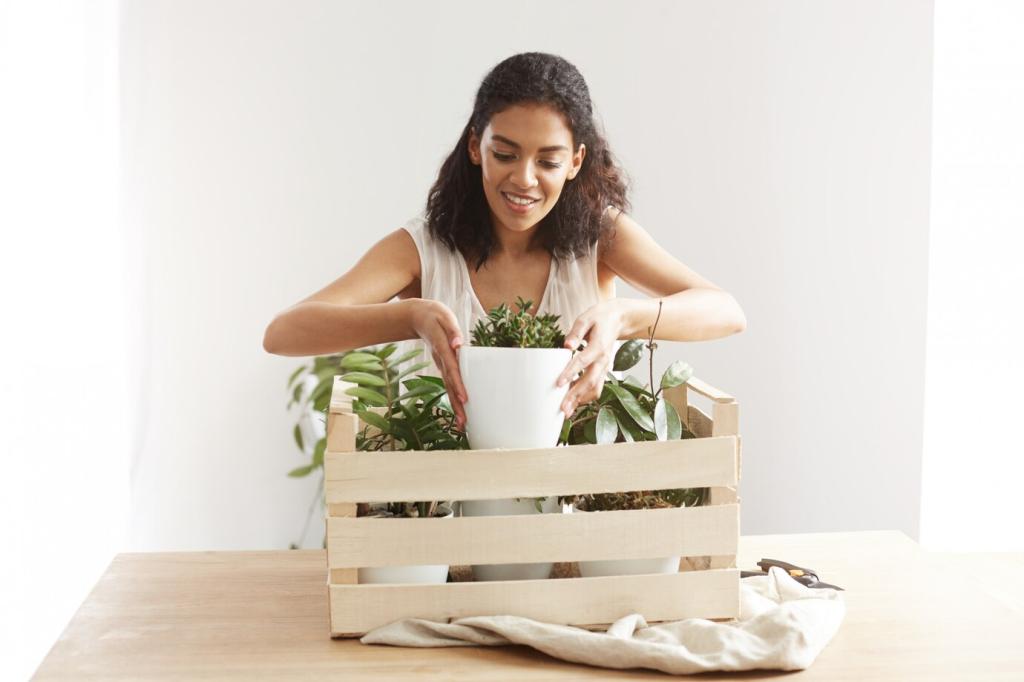
Indoor Greenery, Realistically Maintained
Map your light: bright, medium, or low. Fiddle leaf figs love bright indirect light; pothos tolerates dim corners; herbs crave sun. Match containers to roots, and rotate pots monthly to encourage balanced growth and graceful form.
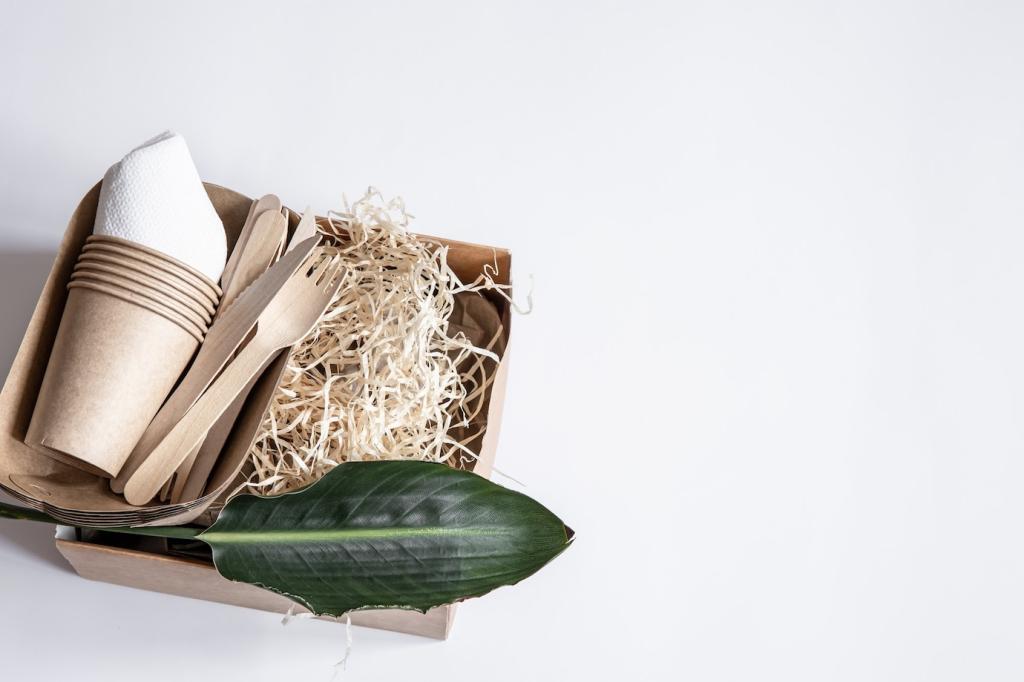
Indoor Greenery, Realistically Maintained
Create a weekly ten-minute ritual: check soil moisture, remove spent leaves, wipe dust from foliage, and water slowly. Use a calendar nudge, pair care with music, and celebrate small wins—new shoots or a plant that finally settles in.
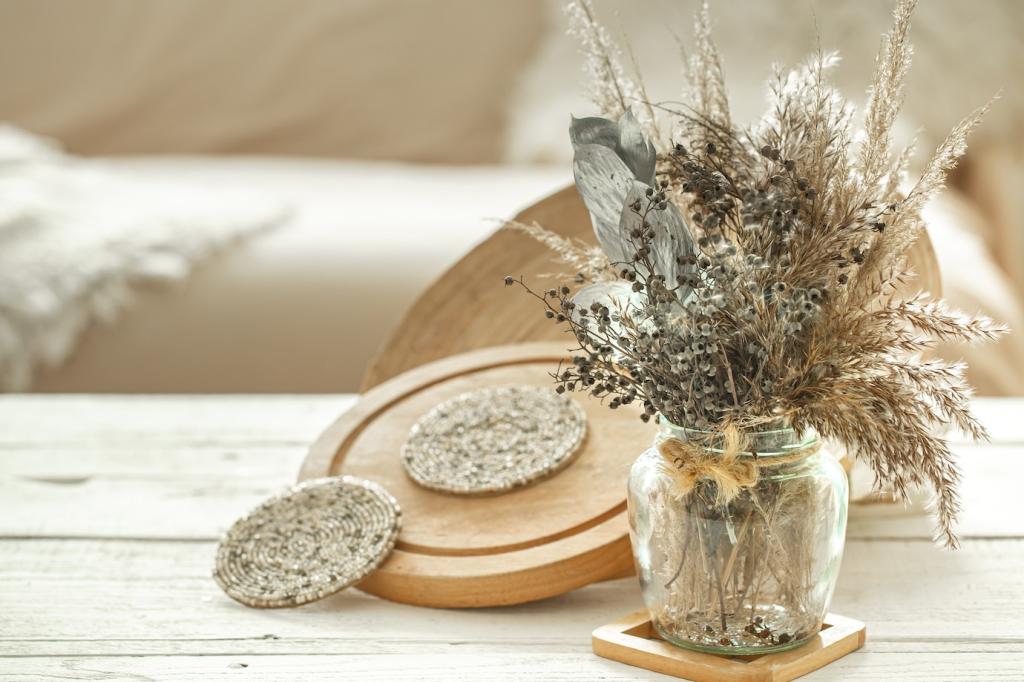
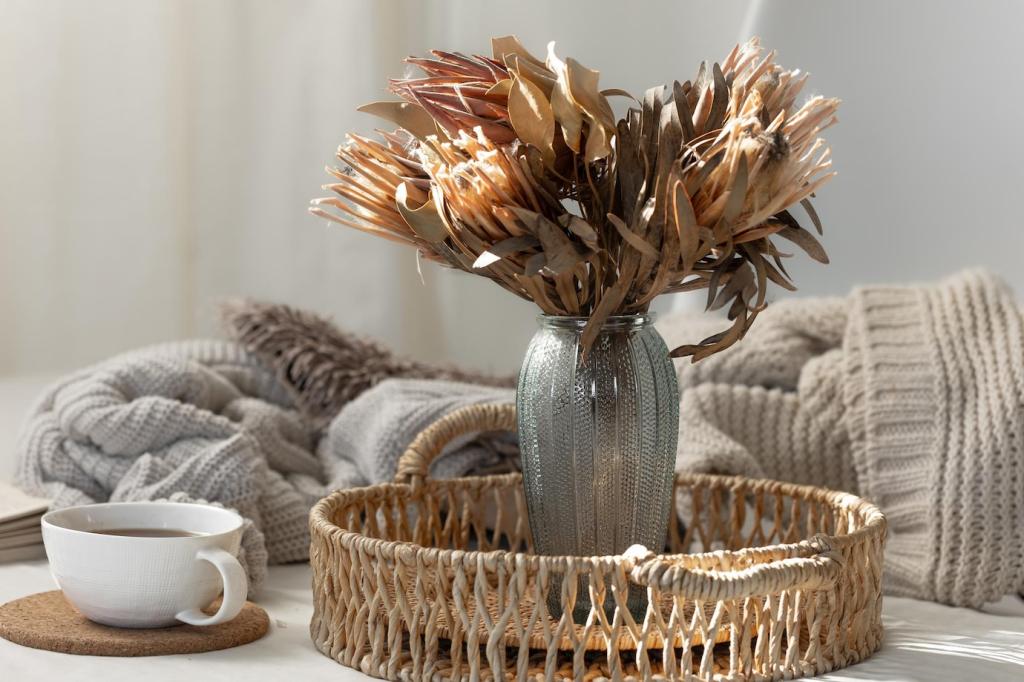
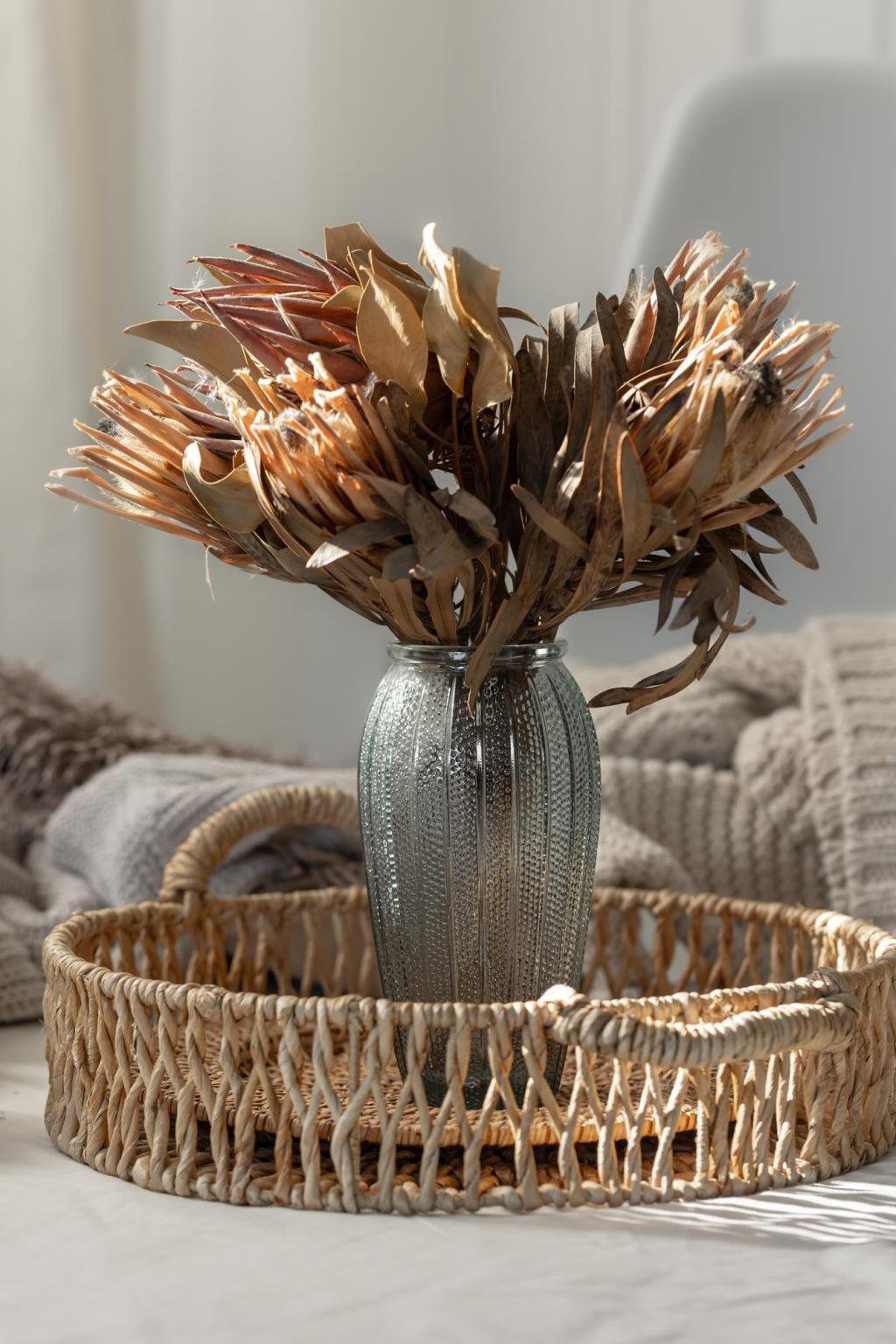
Patterns, Forms, and Stories from Nature
Biomorphic Patterns and Visual Prospect–Refuge
Incorporate leaf veining, branching structures, and gentle spirals on textiles or screens. Pair a wide view (prospect) with a sheltered seat (refuge) so your eyes wander freely while your body feels safe and grounded.
Colors Borrowed from Landscapes
Build palettes from places you love: dune beiges, river blues, forest greens, basalt grays. Anchor large surfaces in calmer hues, then layer small accents that echo seasonal shifts, keeping rooms fresh without constant overhaul.
Show Us Your Nature Story
What landscape taught you to breathe easier? Post a memory—smell, light, sound—and how you translated it into a corner of your home. Subscribe for monthly prompts that turn memories into design moves.
